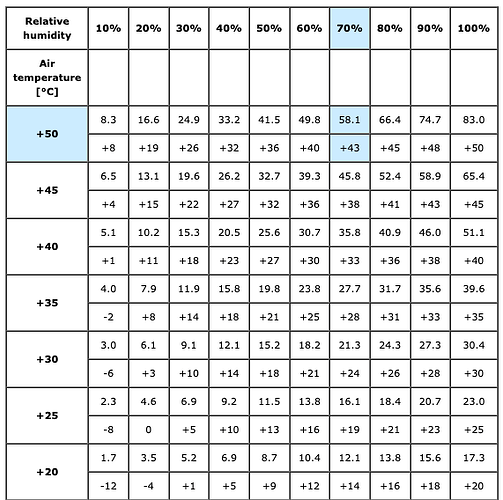Absolute humidity
Absolute humidity is the amount of water vapour present in a given mass of air at a particular time and temperature, which can be expressed as:
Absolute humidity is generally given in g/kg or kg/kg, but can be representation in any units of mass.
Relative humidity
Relative humidity is the ratio of the amount of water vapour present in the atmosphere to the maximum amount of water vapour the air can hold.
where
\phi= relative humidity [%]
p_{w} = vapor partial pressure [mbar]
p_{ws} = saturation vapor partial pressure at the actual dry bulb temperature [mbar]. This is the vapour pressure at maximum content of water gas in air, before it starts to condense out as liquid water.
Relationship between absolute and relative humidity with respect to the temperature at sea level is given in the following table:
References:
